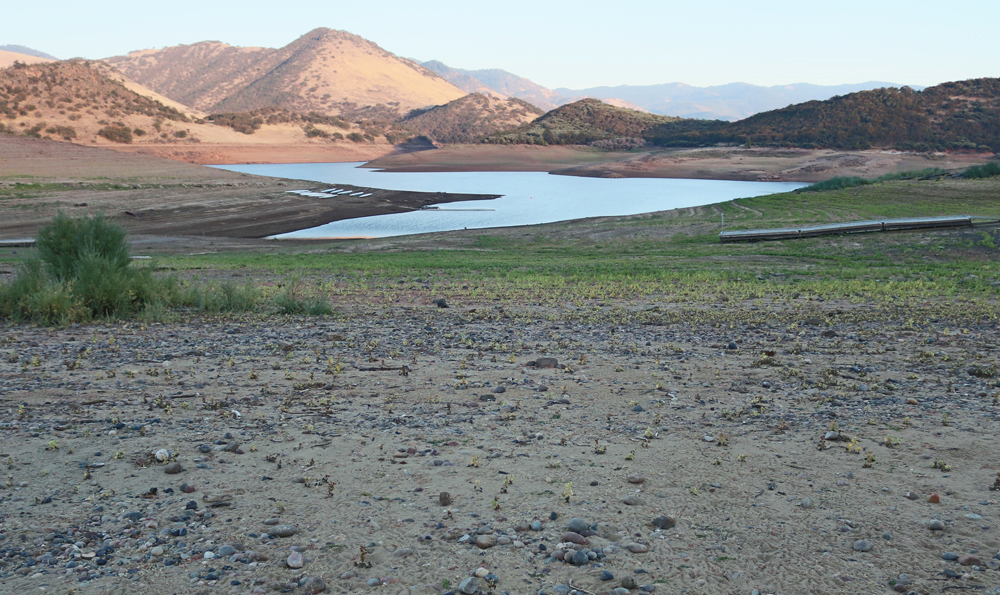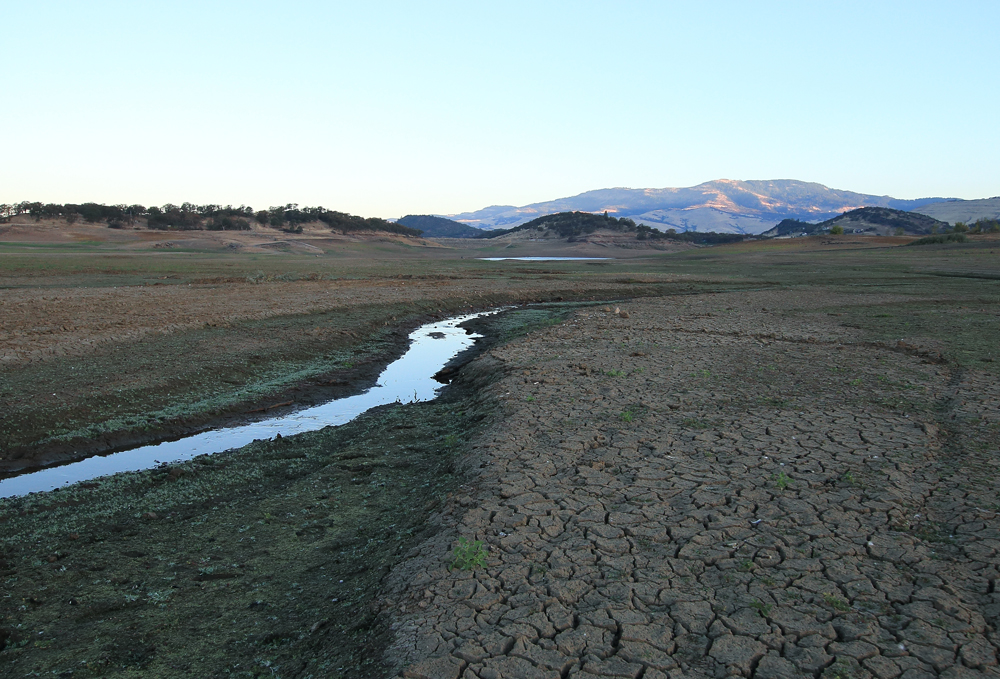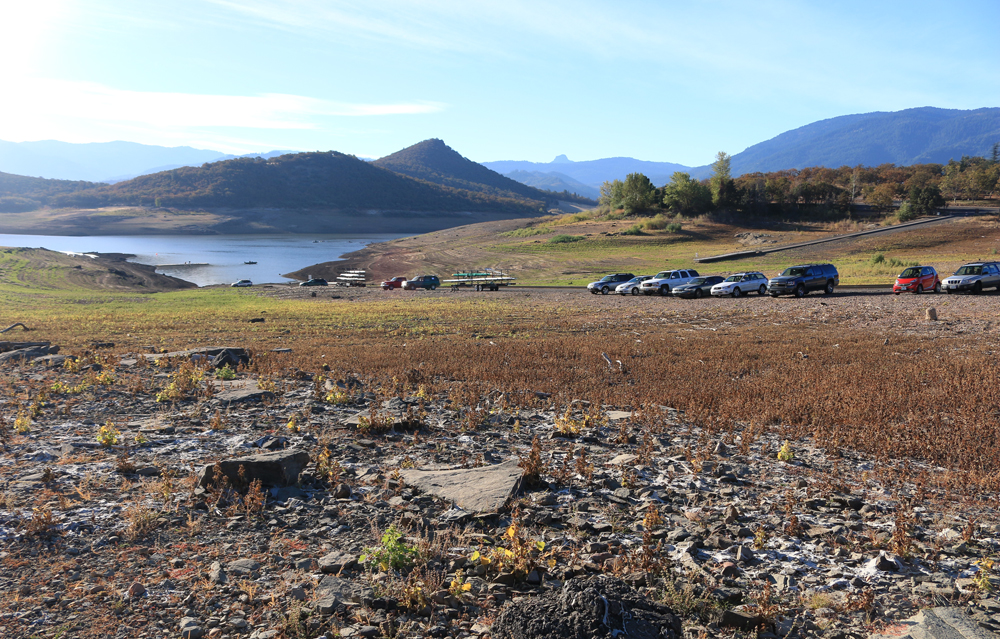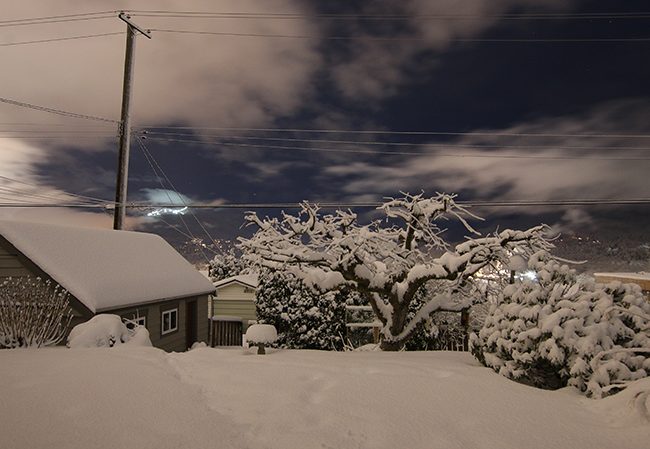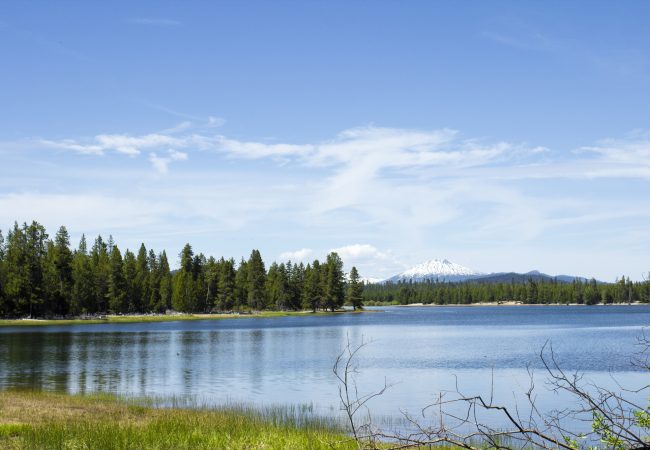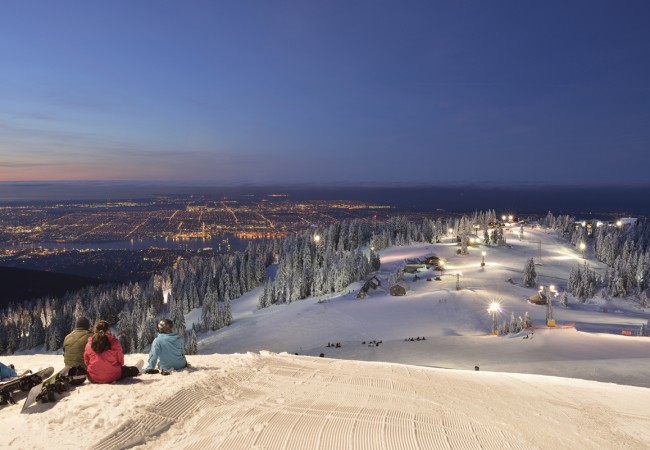The late winter storm that hit the south coast of…
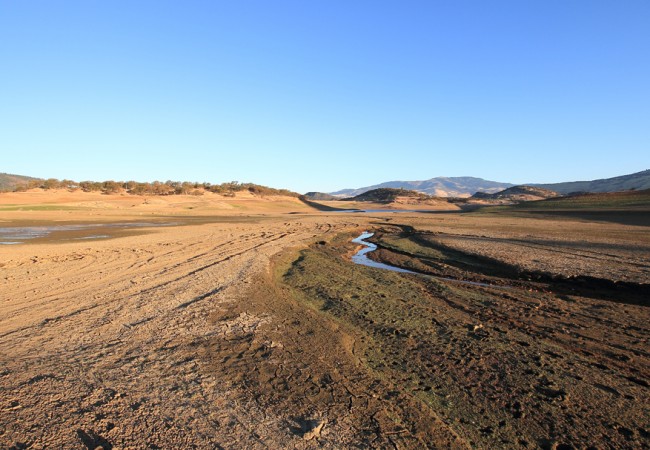
Not Much Left of Emigrant Lake in Southern Oregon’s Drought
By October of every year, Emigrant Lake near Ashland, Oregon is usually quite low. Irrigators have spent six or more months drawing water, while the hot, dry southern Oregon summers have cranked up evaporation and turned the reservoir’s feeder creeks to a trickle.
But it’s never been this bad. In May of 2015, The Jackson County Board of Commissioners declared a drought emergency. Every body of water in the Talent Irrigation District, of which Emigrant Lake is a part, was at or near record lows with the typically dry summer weather approaching.
Emigrant Lake and the entire Rogue Basin region are suffering from what’s been called a “wet” drought. Total precipitation in the basin, at 89 percent of average for the 2014-2015 water year, should have provided plenty of water for the summer. The problem was that, due to an unusually warm winter, most of that precipitation fell as rain. The snowpack, on which the basin’s reservoirs depend to sustain water levels through the summer, was just 13 percent of average (figures from the U.S. Department of Agriculture).
Entering the winter of 2015-2016, predicted to include one of the strongest El Niño phases on record, officials aren’t hopeful for a turnaround in the drought going into next summer. The entire Pacific Northwest needs a snowpack well above normal to provide much relief. But considering the weather that previous El Niño winters have generated, snowfall will once again remain below normal.
At Emigrant Lake, a popular destination for boaters, water skiers and fishermen, the low water has curtailed most recreation. Docks sit high and dry, and boat launches are closed. The Ashland Rowing Club still uses the lake for training and competition, although their training space has shrunk considerably. There is, however, lots more room for parking and boat storage.

